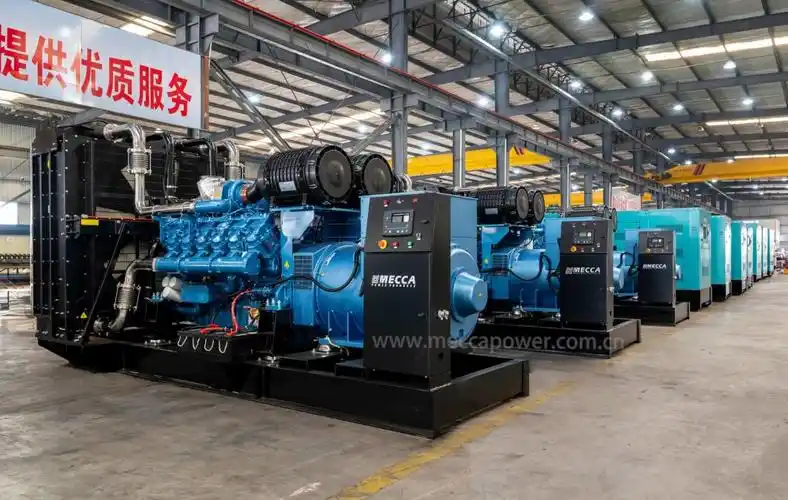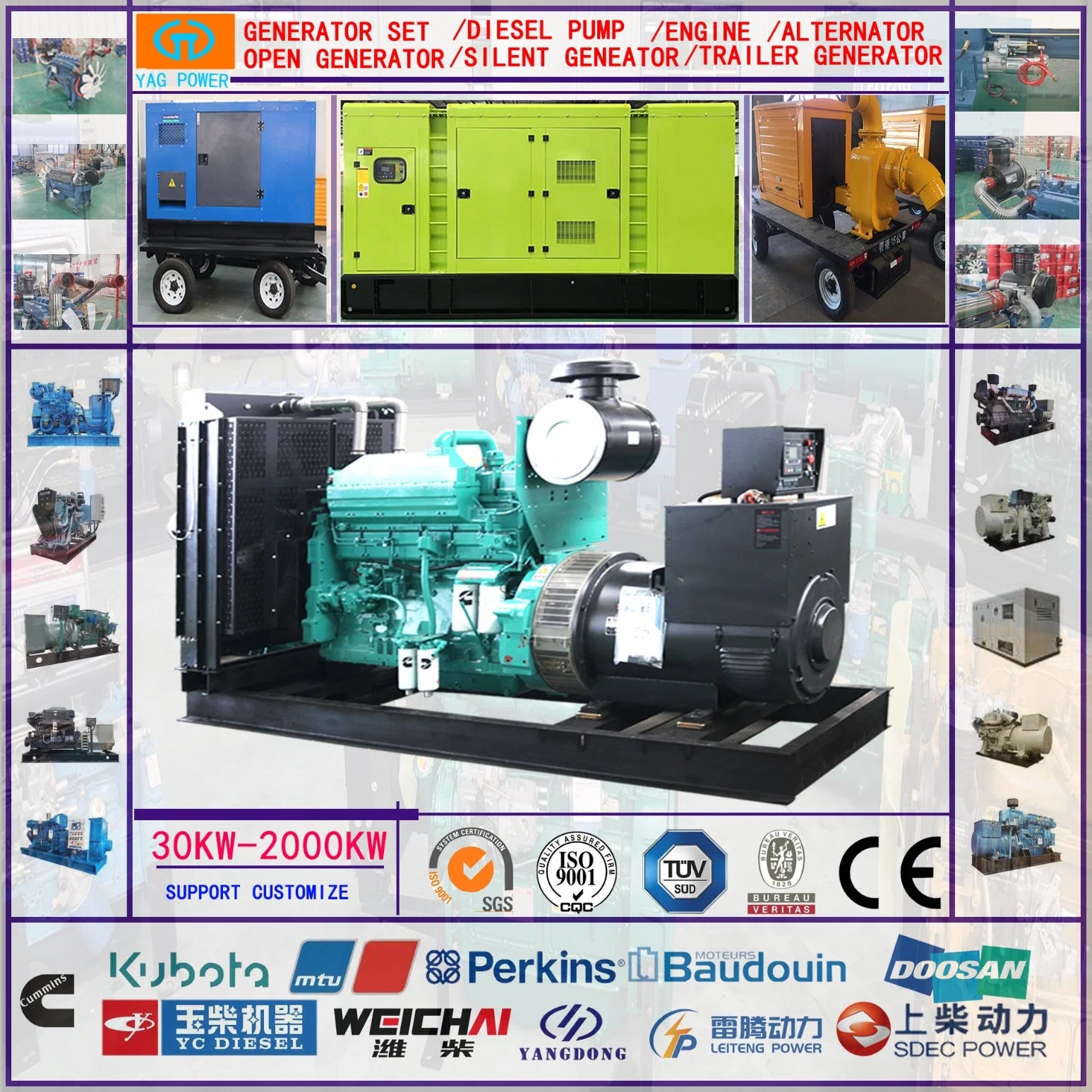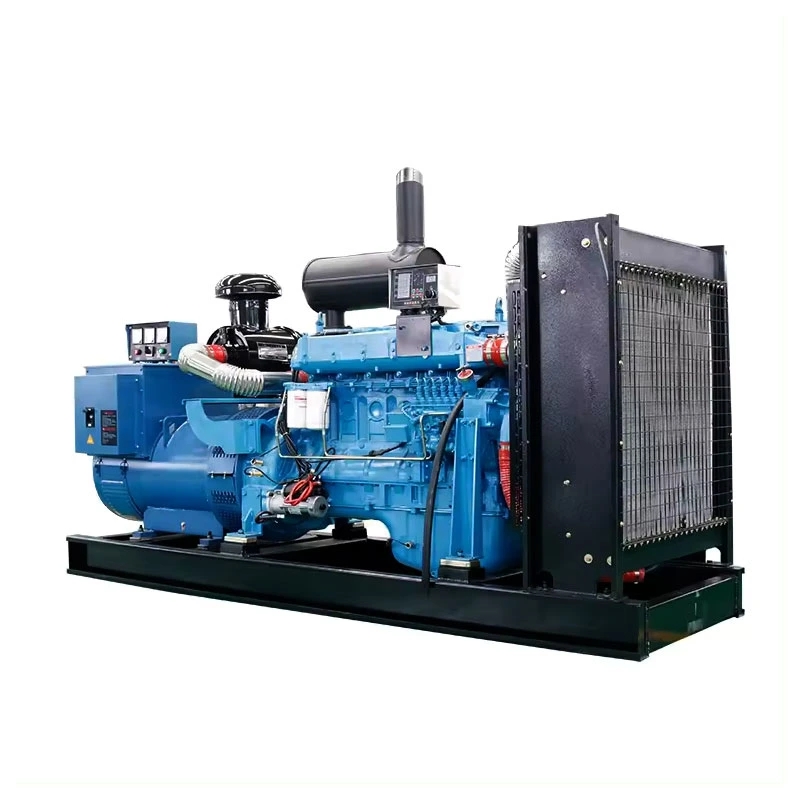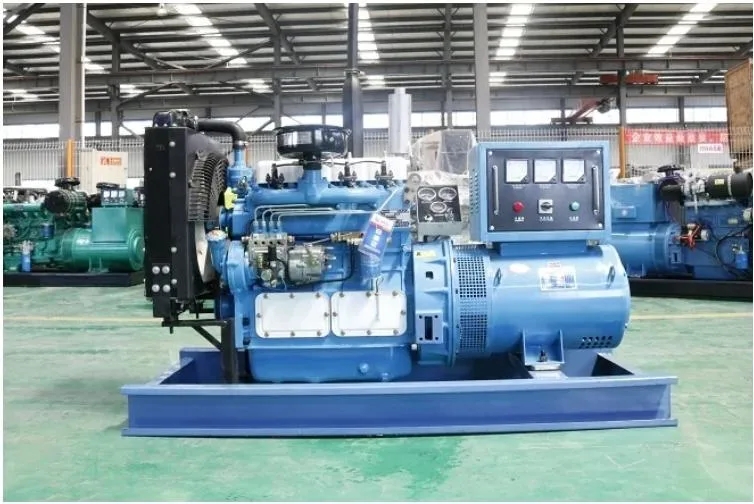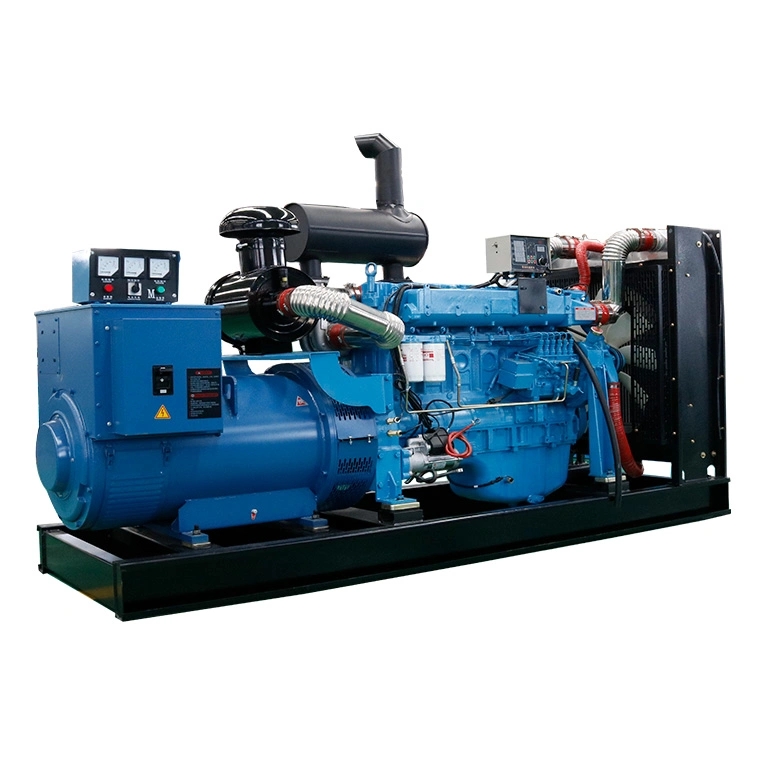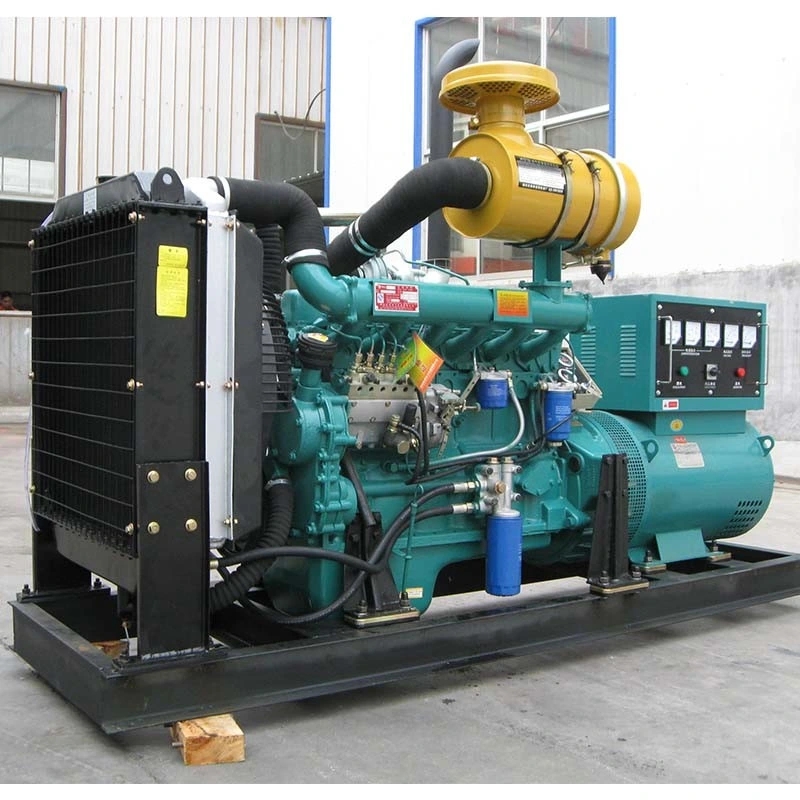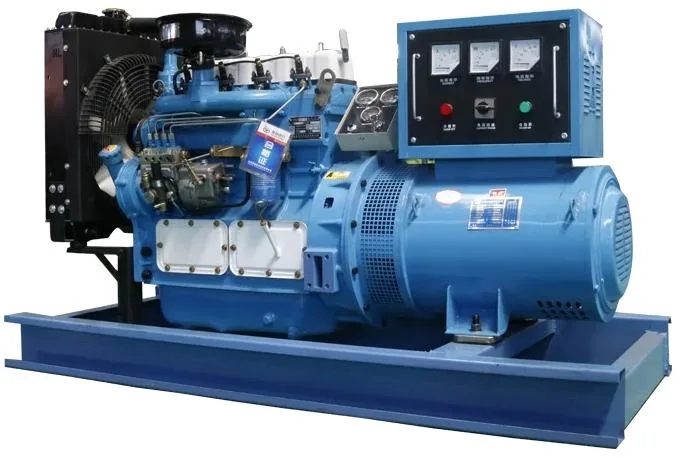Table of Contents
Toggle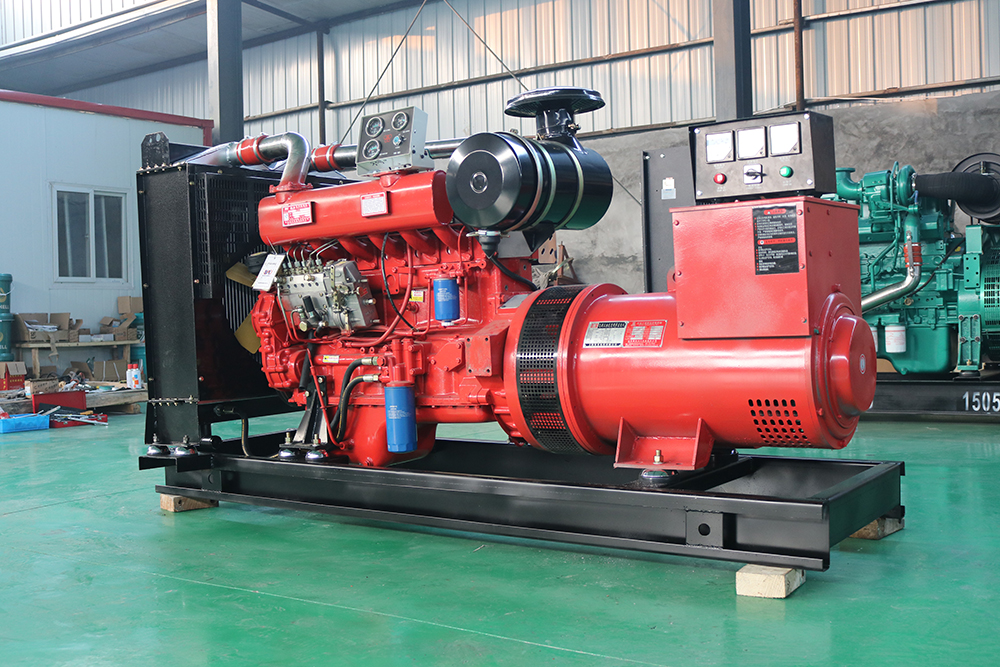
Introduction
In the dynamic realm of power generation, a remarkable solution stands out, ensuring uninterrupted energy supply across diverse applications – the genset. This ingenious device, a harmonious fusion of an engine and an alternator, has become an indispensable asset in our modern infrastructure. Whether powering critical facilities during grid outages, energizing remote construction sites, or illuminating grand-scale events, gensets have proven their mettle time and again.
Demystifying the Genset: A Closer Look
At its core, a genset, an abbreviation for “generator set,” is a self-contained unit designed to generate electrical power. Unlike traditional generators, which solely produce electricity, a genset encompasses a complete system, integrating an engine and an alternator within a robust framework. This synergistic combination allows the engine to convert chemical energy from fuel into mechanical energy, which in turn drives the alternator, ultimately transforming that kinetic force into electrical current.
Key Components: The Driving Force Behind Gensets
To fully grasp the inner workings of a genset, it’s essential to understand its vital components and their respective roles:
- Frame: The sturdy base frame serves as the foundation, supporting the entire genset assembly while mitigating vibrations and, in some cases, housing the fuel tank.
- Fuel System: Responsible for delivering the necessary fuel, whether diesel, natural gas, or alternative sources like biofuels, to the engine, ensuring a consistent and efficient combustion process.
- Engine/Motor: At the heart of the genset lies the engine or motor, a robust combustion unit that harnesses the chemical energy from fuel and converts it into mechanical energy, setting the entire system in motion.
- Exhaust System: As the engine operates, it generates combustion byproducts that must be safely expelled. The exhaust system plays a crucial role in channeling these gases away from the genset, often incorporating emission control technologies to minimize environmental impact.
- Alternator: This critical component is the true power generator, transforming the mechanical energy from the engine into electrical energy through the principle of electromagnetic induction.
- Voltage Regulator: To maintain a stable and consistent power output, voltage regulators are employed, ensuring that the electrical current generated adheres to predetermined voltage levels, preventing fluctuations or surges.
- Control Panel: Acting as the central command hub, the control panel enables comprehensive monitoring and management of the genset’s operation, displaying real-time data on vital parameters such as voltage, frequency, and fuel levels.
- Cooling System: Gensets generate substantial heat during operation, necessitating an efficient cooling system to prevent overheating and ensure optimal performance. This is typically achieved through air or liquid cooling mechanisms.
- Enclosure: Many gensets are housed within sound-attenuated enclosures, designed to minimize noise pollution and protect the internal components from harsh environmental conditions.
- Automatic Transfer Switch (ATS): For seamless integration into existing power distribution systems, gensets often incorporate an Automatic Transfer Switch (ATS). This intelligent component automatically detects grid power failures and seamlessly transfers the electrical load to the genset, ensuring uninterrupted power supply.
Genset Classifications: Tailored Solutions for Every Need
The versatility of gensets is further amplified by their diverse classifications, each designed to cater to specific applications and power requirements:
- Portable Gensets: As the name suggests, these compact and mobile units are ideal for providing power in remote locations or during recreational activities like camping. Their portability and ease of use make them a popular choice for personal or small-scale applications.
- Standby Gensets: Serving as a reliable backup power source, standby gensets are designed to automatically activate during grid failures, ensuring uninterrupted operations in critical facilities such as hospitals, data centers, and commercial buildings.
- Prime Power Gensets: In areas without access to the grid or where the existing infrastructure is inadequate, prime power gensets act as the primary source of electricity. These robust units are commonly employed in construction sites, mining operations, and remote industrial facilities.
- Diesel Gensets: Renowned for their efficiency and durability, diesel-powered gensets are among the most widely used, leveraging the cost-effectiveness and ease of transportation associated with diesel fuel.
- Gas Gensets: Offering a more environmentally friendly alternative, gas gensets utilize natural gas, biogas, or liquefied petroleum gas (LPG) as fuel sources, resulting in lower emissions and reduced environmental impact.
- Dual-Fuel Gensets: Combining the best of both worlds, dual-fuel gensets can operate on a combination of diesel and natural gas, providing flexibility and adaptability to varying fuel availability and cost considerations.
- Low-Power Gensets: Designed for modest power requirements, low-power gensets typically produce outputs ranging from a few kilowatts to around 20 kilowatts, making them suitable for residential or small commercial applications.
- High-Power Gensets: At the opposite end of the spectrum, high-power gensets are engineered to deliver substantial electrical outputs, often measured in megawatts. These industrial-grade units are essential for powering large-scale operations, such as data centers, manufacturing facilities, and critical infrastructure projects.
Gensets in Action: Diverse Applications Across Industries
The versatility of gensets extends far beyond their technical specifications, as they play a pivotal role in various industries and applications:
- Emergency Backup Power: In critical facilities like hospitals, data centers, and emergency services, gensets serve as lifelines, ensuring an uninterrupted power supply during grid outages, safeguarding essential operations and potentially saving lives.
- Construction Sites: With reliable power being a prerequisite for construction projects, gensets provide the necessary energy to power tools, machinery, and temporary facilities, enabling seamless progress even in areas with limited or unreliable grid access.
- Industrial Operations: From manufacturing plants to mining sites, gensets are invaluable assets, preventing production disruptions and ensuring continuity during power outages, particularly in remote or off-grid locations.
- Telecommunications: Mobile phone towers and communication infrastructure rely on gensets as backup power solutions, ensuring uninterrupted connectivity and preventing costly service disruptions.
- Agriculture: In rural areas where grid access may be limited or unreliable, gensets power irrigation systems, farm equipment, and facilities, supporting agricultural productivity and sustainability.
- Entertainment Events: From outdoor concerts and festivals to sporting events, gensets are instrumental in providing power for lighting, sound systems, and other event infrastructure, ensuring seamless and memorable experiences.
- Off-Grid Power Generation: In areas where connecting to the conventional grid is impractical or prohibitively expensive, gensets serve as the primary power source, enabling the establishment of self-sufficient communities and remote operations.
- Remote Industrial Sites: Whether it’s oil and gas exploration, mining, or other resource extraction activities, gensets are essential for powering operations in remote locations where access to the main power grid is not feasible.
- Military Applications: The reliability and portability of gensets make them indispensable in military operations, providing power in remote locations and serving as backup systems for critical installations.
- Disaster Relief: In disaster-prone areas, gensets play a crucial role in providing immediate power for emergency response activities, hospitals, and relief efforts, ensuring vital services remain operational during times of crisis.
- Educational Institutions: Acting as backup power sources, gensets ensure that educational activities in schools and universities can continue uninterrupted during power outages, minimizing disruptions to the learning process.
- Commercial Establishments: From supermarkets to office buildings, gensets support essential functions such as refrigeration, lighting, and the operation of electronic equipment, preventing costly downtime and ensuring business continuity.
- Water Treatment Facilities: By providing reliable power, gensets enable the continuous operation of water treatment plants, ensuring an uninterrupted supply of clean water to communities, even during grid failures.
Benefits of Embracing Genset Technology
As the demand for reliable and sustainable power solutions continues to grow, the adoption of genset technology offers a myriad of benefits:
- Reliable Power Supply: Gensets provide a continuous and stable power supply, ensuring critical operations can proceed without interruption, even in the face of grid outages or unreliable infrastructure.
- Portability and Versatility: Many gensets are designed for portability, allowing them to be deployed in various locations, from construction sites to remote areas without grid access. Additionally, their versatility extends to fuel types, with options ranging from diesel and natural gas to biofuels.
- Scalability: Gensets are available in a wide range of sizes and power capacities, from small units for residential use to large-scale industrial gensets capable of generating megawatts of power. This scalability allows users to select the perfect solution tailored to their specific power requirements.
- Cost-Effectiveness: When compared to the potential losses caused by power interruptions, investing in a genset can be a cost-effective solution. Furthermore, gensets can reduce electricity costs in areas where grid power is expensive, especially when utilized during peak demand periods.
- Ease of Maintenance: With regular maintenance and upkeep, gensets can be kept in optimal operating condition, ensuring long-term reliability and performance.
- Environmental Consciousness: Modern gensets incorporate advanced technologies to control and reduce emissions, complying with environmental regulations and contributing to sustainability efforts.
- Automatic Operation: Many gensets are equipped with intelligent control systems that automatically initiate startup and shutdown procedures, ensuring a seamless transition between grid power and generator backup, without the need for manual intervention.
- Remote Monitoring and Control: Advanced gensets offer remote monitoring and control capabilities, allowing users to access real-time data and operate the system from a distance, enhancing convenience and efficiency.
- Parallel Operation: In situations where a single genset is insufficient, multiple units can be operated in parallel, increasing overall power output and providing redundancy for critical applications.
- Safety Features: Gensets are designed with robust safety features, such as overload protection, low oil level monitoring, and emergency shutdown systems, safeguarding the equipment and connected loads from potential hazards.
Embracing Sustainability: Gensets and the Energy Transition
As the world transitions towards more sustainable energy sources, genset manufacturers are at the forefront of innovation, exploring alternative fuels and hybrid solutions to reduce environmental impact:
- Biofuels: Second-generation biofuels derived from organic materials, such as biodiesel, can serve as direct replacements for conventional diesel, offering a more sustainable and renewable fuel option.
- Synthetic Fuels: Synthetic fuels like Gas-to-Liquid (GTL) diesel are gaining traction, as they combust more efficiently and produce fewer emissions compared to traditional diesel.
- Hydrogen Fuel Cells: Cutting-edge hydrogen fuel cell technology is being integrated into gensets, providing a zero-emission power solution that harnesses the energy from hydrogen and oxygen to generate electricity.
- Hybrid Solutions: By combining gensets with renewable energy sources like solar panels or wind turbines, and incorporating energy storage systems like batteries, hybrid solutions offer a more sustainable and efficient approach to power generation.
- Emission Control Technologies: Advanced emission control systems, such as Selective Catalytic Reduction (SCR) and Diesel Particulate Filters (DPF), are being implemented to significantly reduce harmful emissions from gensets, aligning with stringent environmental regulations.
Installation and Maintenance: Ensuring Optimal Performance
To maximize the benefits of genset technology, proper installation and maintenance practices are paramount:
- Site Preparation: Careful site preparation is essential, considering factors such as ventilation, noise mitigation, fuel storage, and accessibility for maintenance and servicing.
- Proper Sizing: Accurately determining the power requirements of the intended application is crucial to selecting the appropriate genset size, ensuring efficient operation and preventing under- or over-sizing.
- Integration with Power Distribution Systems: Seamless integration with existing power distribution systems is achieved through the installation of Automatic Transfer Switches (ATS) and proper load management strategies.
- Scheduled Maintenance: Regular maintenance, including oil changes, filter replacements, and system checks, is vital to ensure optimal performance, longevity, and reliability of the genset.
- Fuel Quality and Storage: Maintaining fuel quality and proper storage practices is essential to prevent contamination and ensure consistent, efficient combustion within the genset.
- Operator Training: Providing comprehensive training to operators on the safe and effective operation, maintenance, and troubleshooting of gensets is crucial for maximizing their lifespan and minimizing downtime.
- Remote Monitoring and Diagnostics: Advanced gensets often incorporate remote monitoring and diagnostic capabilities, allowing for proactive maintenance and timely identification of potential issues, reducing downtime and costly repairs.
The Future of Genset Technology: Innovations on the Horizon
As the demand for reliable and sustainable power solutions continues to grow, the genset industry is at the forefront of innovation, constantly pushing the boundaries of efficiency, performance, and environmental responsibility:
- Intelligent Control Systems: Advanced control systems incorporating machine learning and artificial intelligence are being developed to optimize genset performance, predictive maintenance, and fuel efficiency, further enhancing their reliability and cost-effectiveness.
- Internet of Things (IoT) Integration: The integration of IoT technology into gensets enables real-time monitoring, remote diagnostics, and seamless integration with other connected systems, paving the way for more efficient and intelligent power management solutions.
- Renewable Energy Integration: As the world transitions towards renewable energy sources, genset manufacturers are exploring seamless integration with solar, wind, and other renewable technologies, creating hybrid systems that leverage the strengths of both conventional and renewable power generation.
- Advanced Battery Technologies: The development of more efficient and cost-effective battery storage solutions is enabling the creation of hybrid genset systems that can store excess energy and provide power during peak demand periods, reducing fuel consumption and emissions.
- Modular and Scalable Designs: Innovative modular and scalable genset designs are being developed, allowing for easy expansion and reconfiguration to meet evolving power demands, minimizing downtime and maximizing operational flexibility.
- Alternative Fuel Exploration: Continuous research and development efforts are focused on exploring alternative fuel sources, such as hydrogen, biofuels, and synthetic fuels, to further reduce emissions and enhance the sustainability of genset technology.
- Virtual Power Plant (VPP) Integration: The concept of Virtual Power Plants (VPPs) is gaining traction, where distributed energy resources, including gensets, are intelligently coordinated and managed to optimize power generation, distribution, and consumption across a wide area.
Conclusion
In the ever-evolving landscape of power generation, gensets have firmly established themselves as indispensable assets, providing reliable and versatile solutions across a diverse range of industries and applications. From powering critical facilities during grid outages to energizing remote construction sites and large-scale events, these remarkable devices have proven their worth time and again.
As we continue to navigate the challenges of an increasingly power-hungry world, the genset industry remains at the forefront of innovation, exploring new frontiers in sustainability, efficiency, and intelligent power management. With a commitment to environmental responsibility and a drive to push the boundaries of what’s possible, the future of genset technology promises to be an exciting journey, paving the way for a more resilient and sustainable energy future.
Whether you’re a homeowner seeking backup power, a business owner ensuring uninterrupted operations, or an event organizer illuminating the stage, gensets offer a reliable and versatile solution tailored to your unique needs. Embrace the power of gensets and experience the peace of mind that comes with a dependable and adaptable energy source, no matter the challenge or location.




